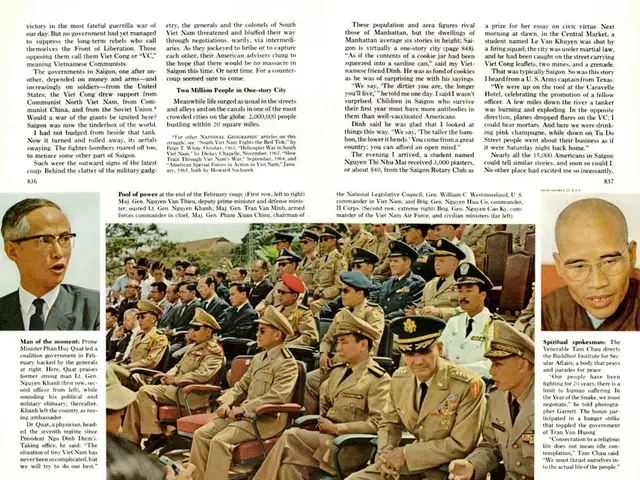Strategies for Launching a Fashion Brand Post-Pandemic: Guidelines to Kickstart Your Clothing Line
Tackling the global pandemic took a toll on everyone – businesses, individuals, sectors, and economies worldwide. Yet, amidst the chaos and uncertainty, creativity had a chance to bloom. For example, people began crafting unique clothing lines from their homes, particularly within the fashion industry.
The surge in DIY fashion projects led to a spike in demand for bespoke clothing manufacturers like The Evans Group. This growing interest in creating individual clothing brands is credit to the Maker Movement, encouraging everyday people to pursue their creative interests and craft their own products.
During this pandemic, the fashion industry was hit hard. In-person events, gatherings, and meetings that once defined the industry were put on hold. Subsequently, the need for fashionable attire, whether for work or social occasions, dramatically decreased. As a result, the future of the fashion industry became uncertain.
However, the pandemic presented a unique opportunity for growth and change in the fashion landscape. In a 2021 article for Retail Leader, Tori Jakpa explained that fashion managed to adapt and persist.
Shoppers turned to online platforms to keep up with fashion trends, refresh their wardrobes, boost their confidence, or acquire more comfortable clothing for the new work-from-home lifestyle. As such, the fashion industry persevered through this once-in-a-lifetime event.
Navigating the pandemic has been challenging for the clothing manufacturing sector. According to McKinsey, the fashion industry saw uneven performance, with discount and luxury outlets outperforming the mid-market, which remained under pressure. However, McKinsey & Company remains hopeful for the future of clothing designers.
McKinsey predicts that the fashion industry will recover and grow in 2022, as new frontiers in digital technology, sustainability, and category landscapes continue to emerge. Although supply chain issues and regional discrepancies remain, there's excitement and optimism for the future of clothing design.
With the world slowly transitioning from a pandemic to an endemic stage, now is the perfect time to consider launching a clothing brand of your own. The flexibility to work from home has made the design process more accessible than ever before, and clothing manufacturers are adapting to this new normal.
Here's how to design a clothing line in three simple steps.
Step 1: Let Creativity Reign Supreme
Collaborate with your imagination and listen to your wildest ideas. Fashion is about expressing yourself and sharing your vision with the world.
Create a fashion mood board to gather ideas, words, pictures, and themes that inspire your designs. This visual representation will help translate your creativity into wearable art.
Step 2: Choose Local and Support Sustainability
Patronize a domestic clothing manufacturer whenever possible. Working closely with a local team comes with numerous benefits, such as quality checks, supporting local workers, and fostering a strong connection between designer and manufacturer.
Furthermore, consider the environment and opt for eco-friendly fabrics and sustainable practices in your designs. This focus on sustainability will resonate with today's consumers, helping your brand gain traction in the market.
Step 3: Be Economical and Lower Your MOQ
Creating a clothing line can be costly, but you can minimize expenses by selecting a clothing manufacturer with a low minimum order quantity (MOQ). A lower MOQ allows you to test your market and adjust your designs based on consumer feedback while keeping expenses manageable.
If you're ready to bring your creative vision to life, turn to the expert team at The Evans Group to guide you every step of the way. Get started on your bespoke clothing line today by filling out the form below.
Though the pandemic reshaped the fashion industry, the spirit of creativity and ambition remains strong. With the right strategy and support, launching and growing a successful clothing line is within reach.
- The pandemic-induced surge in DIY fashion projects is a testament to the power of the Maker Movement, which encourages everyday people to turn their creative ideas into wearable art.
- The fashion industry's future looks promising, as McKinsey predicts that it will recover and grow in 2022, with new frontiers in digital technology, sustainability, and category landscapes emerging.
- In the attempt to launch a successful clothing line, one should first let creativity reign supreme by collaborating with their imagination, gathering ideas, and creating a fashion mood board.
- It's beneficial to choose a domestic clothing manufacturer that supports sustainability and fosters a strong connection between designer and manufacturer, especially in the pursuit of eco-friendly fabrics and practices.
- To minimize expenses when creating a clothing line, opt for a clothing manufacturer with a low minimum order quantity (MOQ), as it allows for testing the market and adjusting designs based on consumer feedback while keeping costs manageable.








